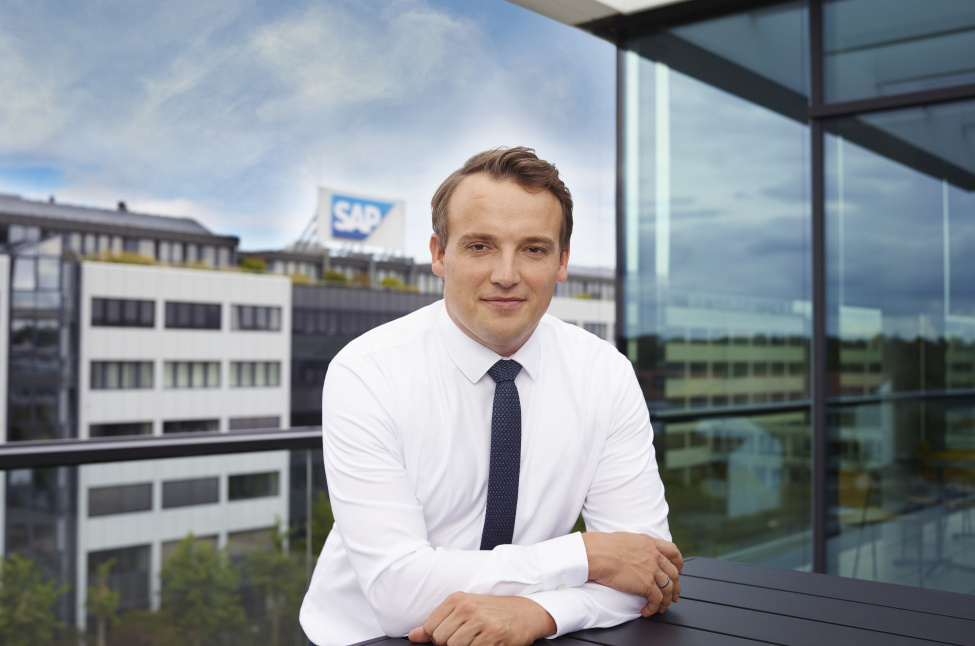 CLOUD
CLOUD
 CLOUD
CLOUD
 CLOUD
CLOUD
With global markets gyrating over the expected impact of tariffs, SAP SE provided some needed reassurance by posting operating profits that soundly beat consensus estimates on revenue slightly lower than expected.
Although the numbers were hardly a blowout, investors responded enthusiastically, bidding SAP shares up nearly 7% in early after‑hours trading. SAP shares are up more than 35% over the past 12 months.
Total revenue of $10.18 billion was up 11% in constant currency from $9.09 billion in the same period a year ago. Cloud revenue of $5.64 billion jumped 26% year‑over‑year.
Operating profit rose 58%, to $2.78 billion, well ahead of analysts’ expectations of $2.51 billion. SAP also reaffirmed its guidance for the full fiscal year. Cloud revenue is expected to grow 28%, to between $24.41 billion and $24.75 billion, while cloud and software revenue should increase 13%, to between $37.40 billion and $37.97 billion. Operating profit is expected to grow 30%, to between $11.64 billion and $11.98 billion.
“With a share of more predictable revenue of 86%, SAP’s business model remains resilient in uncertain times,” said Chief Executive Christian Klein (pictured). The current backlog of $20.57 billion is up 29%, while cloud enterprise resource planning suite revenue jumped 33%, to $4.8 billion.
Executives didn’t sugarcoat the macroeconomic risks on a phone call with analysts. While SAP chose to leave its 2025 outlook metrics unchanged, “conversion rates could be negatively affected by further deceleration of current trade disputes,” said Chief Financial Officer Dominik Asam. “A rapid unwinding of decades of productivity gains driven by the benefits of globalization in the context of an escalating trade war would likely result in a severe global recession.”
But he added, “Our outlook is not based on such an adverse scenario.” SAP is hedging its bets by focusing on cost control and safeguarding the bottom‑line, Asam said.
Klein noted that two‑thirds of the deals closed in the first quarter were with new customers, particularly midsized businesses. “We have a really solid pipeline for the year,” he said. “The fundamental pillars of our growth are stable. Customers are struggling for productivity gains and we are not seeing a correlation of software demand in industries being hit hard by tariffs.”
Among the cost control mechanisms SAP is using internally, the Joule artificial intelligence copilot is saving consultants about 90 minutes a day and boosting developer productivity 30%, Klein said. SAP is also rolling out a standardized contract that will reduce the time from quote to provisioning to less than 24 hours.
Software licenses revenue remained “remarkably resilient,” Asam said, decreasing 10%, to $200 million, also down 10% at constant currencies. Cloud and software revenue rose 13%, to $8.98 billion.
Executives said Business Data Cloud, a unified data lake platform for SAP and third‑party data developed jointly with Databricks Inc., is off to a strong start. Asked how it differs from its Datasphere predecessor, Klein said Business Data Cloud better addresses the disparate data sources that cloud computing has created and that customers need to unite.
Although SAP will share Business Data Cloud revenue with Databricks, the product will ultimately deliver healthier margins to SAP than Datasphere. “The margin comes from data products and we expect to have a very healthy margin in the years to come,” he said.
Support our mission to keep content open and free by engaging with theCUBE community. Join theCUBE’s Alumni Trust Network, where technology leaders connect, share intelligence and create opportunities.
Founded by tech visionaries John Furrier and Dave Vellante, SiliconANGLE Media has built a dynamic ecosystem of industry-leading digital media brands that reach 15+ million elite tech professionals. Our new proprietary theCUBE AI Video Cloud is breaking ground in audience interaction, leveraging theCUBEai.com neural network to help technology companies make data-driven decisions and stay at the forefront of industry conversations.